My main R2 is using cheap small heatsinks for each chip and running ~ 56°C (in my birchwood case without fan). My spare r2 have no heatsinks but does run only max 1h. R64, r2pro and r3 v1.0 have also no heatsinks as they are only for testing like spare-r2 but without case (only in the paper bpi box as dust cover). My new r3 is has a big heatsink over all chips (60x100 cutted to 80 and drilled holes in for mounting) i have put it into the bpi metal case which finally arrives but this has no ventilation holes and no fan mounting holes,have not yet measured temperature here as it was open till last 2 days.
I have a north bridge heatsink/fan on order for my R3. These are 43mm. It won’t cover the 7975s though. Just the CPU and RAM. My plan had been to use the self-sticking thermal pads I don’t like for the 7975s. But I may instead custom drill a heatsink like you did to cover them all.
I found this (similar to one another user posted),but it uses 12v fan which needs soldering:
https://m.de.aliexpress.com/item/32647919007.html?gatewayAdapt=glo2deu
Page not found… (https://www.aliexpress.com/item/33020806051.html)
EDIT:
I will add images instead of a link, see below, in case the new URL will also go down again…
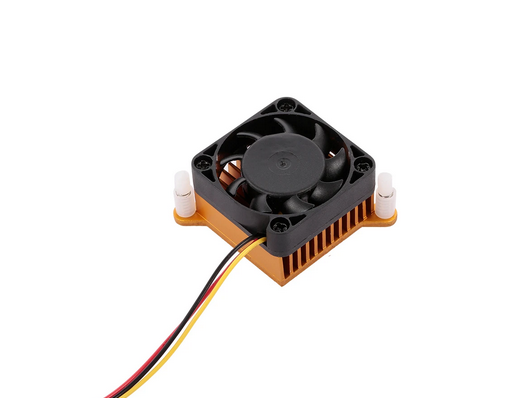
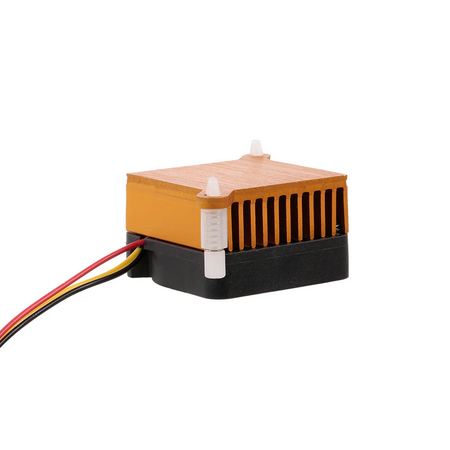
That happens at Ali Express all the time as vendors come and go. Here: https://www.aliexpress.com/item/33020798113.html
EDIT: There are a couple in this listing that look good too. Don’t have one yet, though. https://www.aliexpress.com/item/4001133383805.html
Did it fit in the metal casing?
Yes. There is about 4mm of clearance above it. I highly recommend you drill holes in the top.
Also, you need different thicknesses of thermal pads. The heatsink holes were positioned very poorly. The CPU (shortest), RAM (medium), and 7531 (tallest) are all inside the heatsink hole square and all have very different heights. This means you cannot use a single heatsink with thermal paste, which is by far the best thermal solution. You have to use pads of different thicknesses. I suggest .5mm for the CPU, 1mm for the RAM, and to try and position the heatsink to avoid the 7531 entirely.
It is a very poor design.
Honestly, if I were to do it again, I would use a passive heatsink for the CPU only.
For thermal pads you can use: 0.5mm for 7531 and 1mm for CPU. 1mm works also for RAM and WiFi ICs.
I meant that the other way around. 1mm for the CPU, .5mm for the RAM.
Have you images where you have mounted the heatsink? I see a similar on aliexpress without fan i would try
My solution:
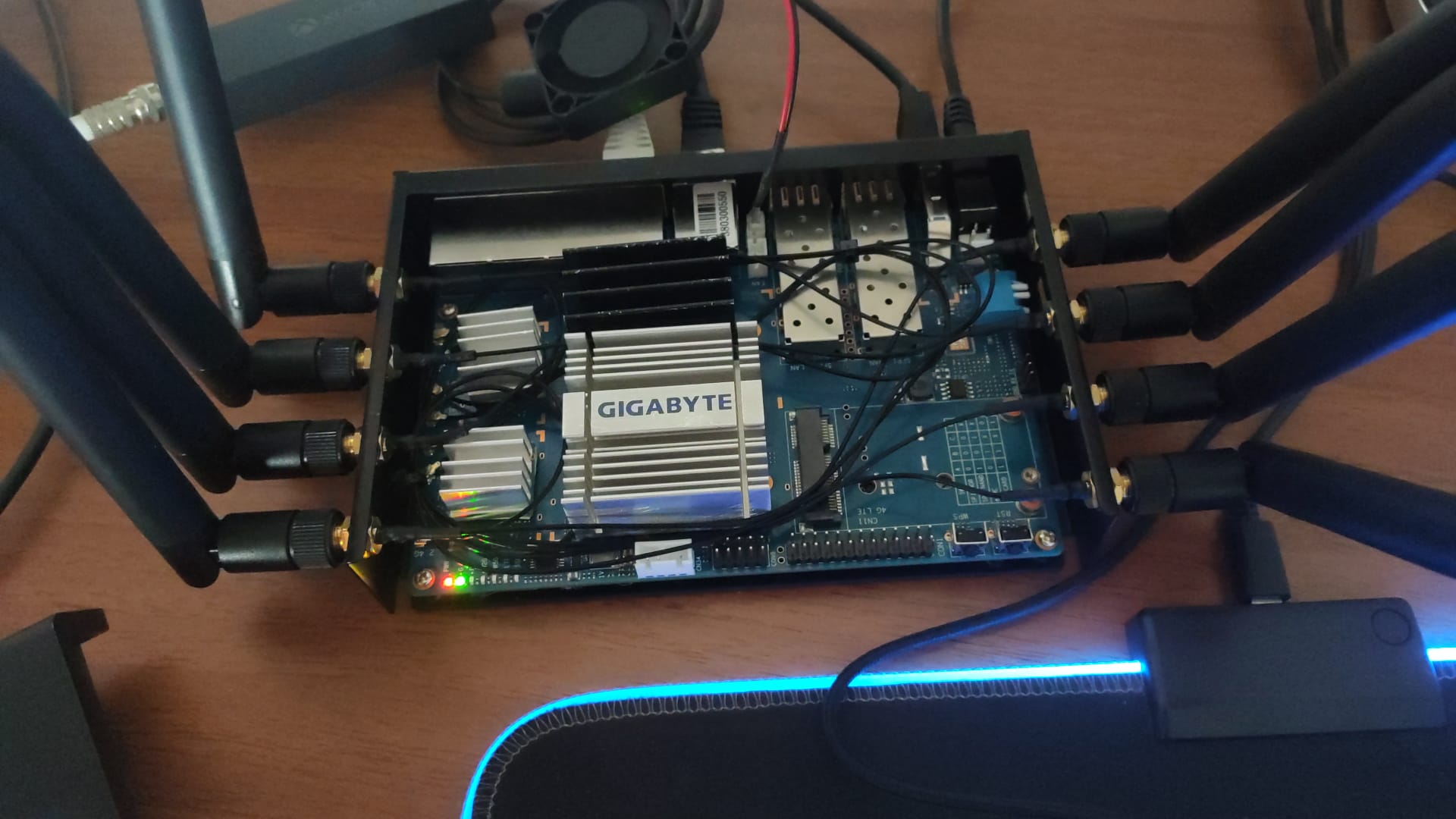
My solution on my second R3:
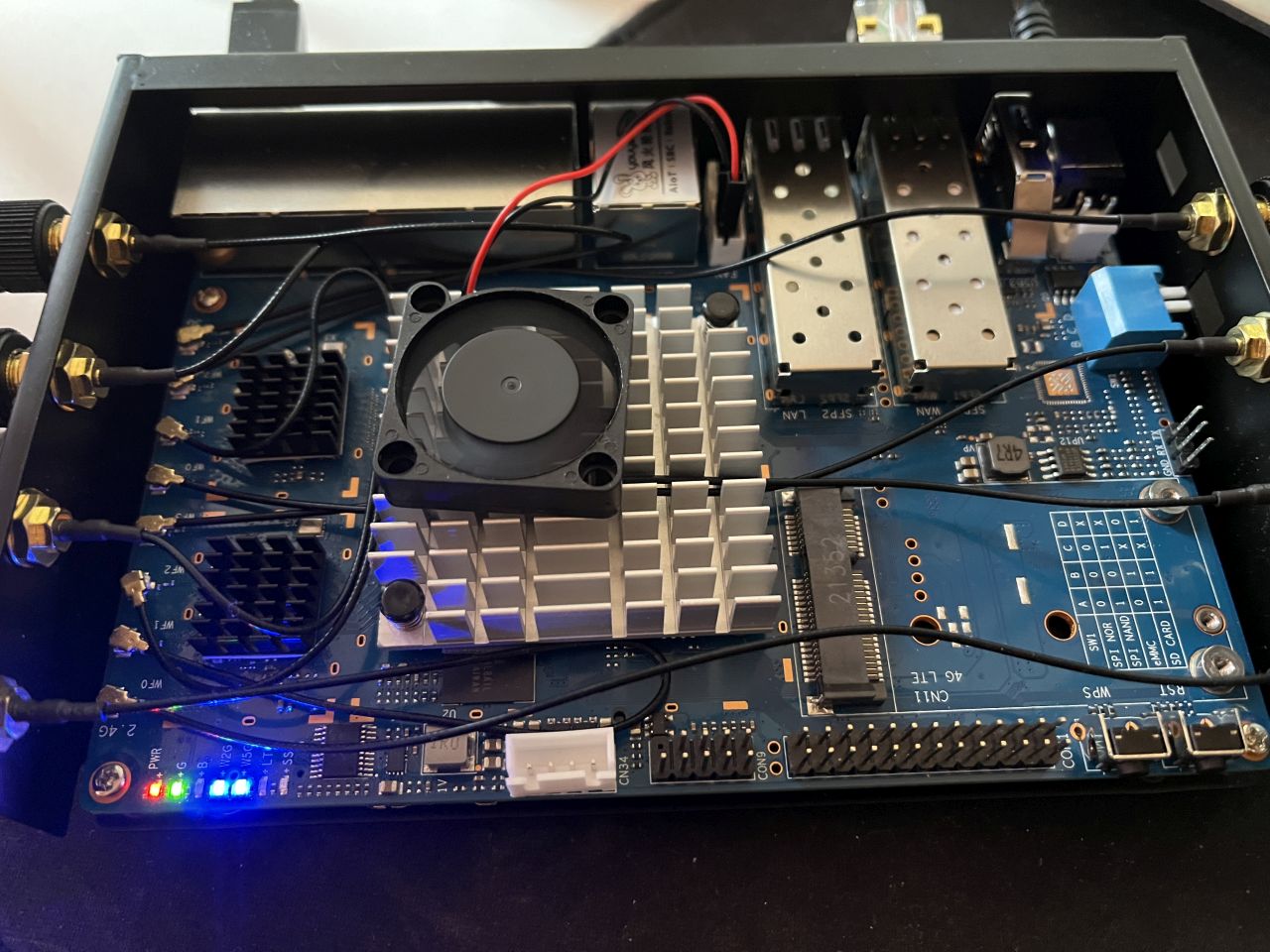
And this is my solution on first R3:


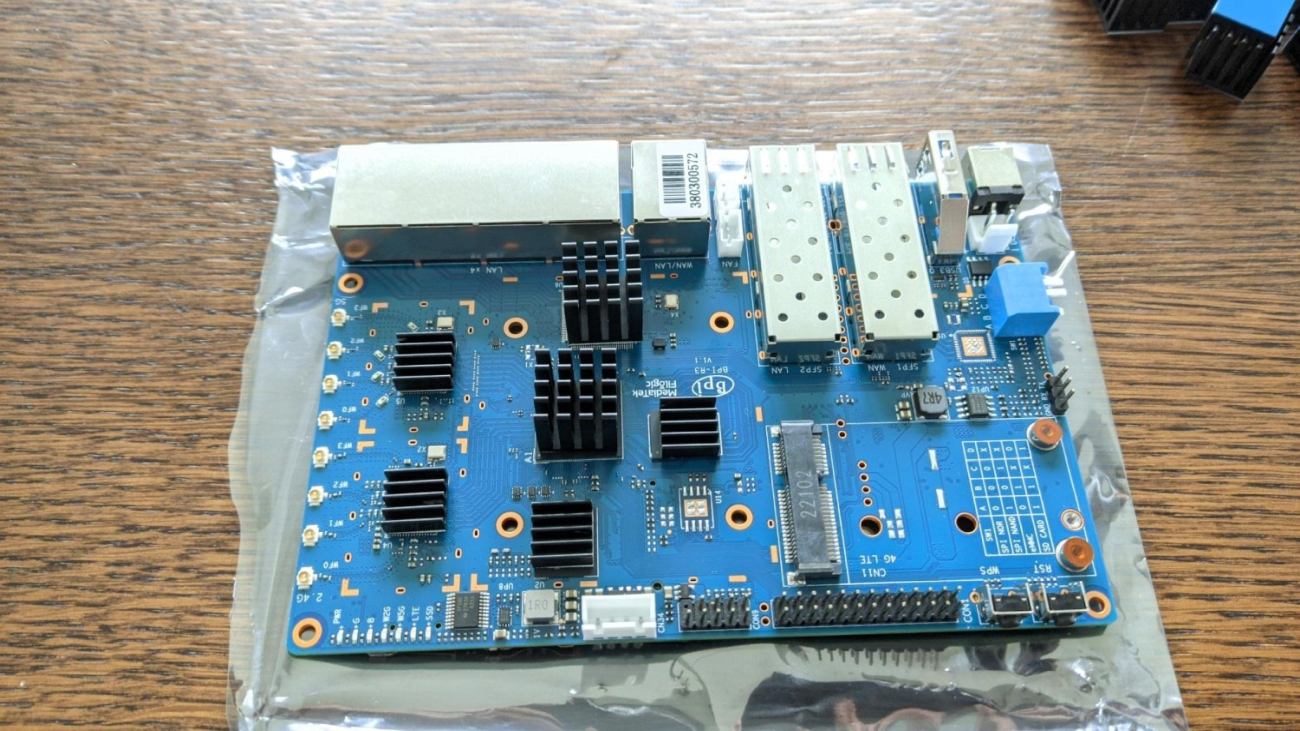
Just some normal cheap Heatsinks.
@Haldi Hi, looks like my intention was to do exactly what you have already done. Can you share some experiance? what is the temperature drop by this simple solution? Have you done some experiments under load and do you think it will be sufficient and no fan will be necessary? And finally - what thermal compaund/silicone/glue did you use ? How can we be sure these heatsinks do not come off ? Thanks!
Haven’t really tested it yet as we still have wrong temperatures right now. (Or was that fixed?)
The plan is not to keep it cool but simply to delay temperature peaks for when I have burst usage peaks.
Will do some testing in summer when it gets really hot in here.
There is no thermal paste as those Heatsinks came with Thermal Pads attached. Seems to hold well enough. It’s not like the router is attached 90° sidewards on the wall or moves around a lot.
I have switched to passive cooling in my device. I started with active in the mistaken belief this SoC would run hotter than the mt7622 (and because I use my boards to build OpenWrt on), but the mt7986 is a much cooler chip.
My new configuration is very similar to Haldi’s:
- Copper 15x15mm (9mm tall) heatsinks for mt7975 radios
- Aluminium 20x20mm (15mm tall) heatsink on mt7986 CPU
- Nothing on DRAM, EMMC or mt7531
- 0.5mm NAB 15W semi-adhesive pads
With the above configuration, here is the temperature chart for the CPU during a four-core parallel build of OpenWrt on the device:
 Prelims for the build started at 18:34, build iteself commenced 19:29, and the CPU was essentially at 100% usage from 19:50 on. I’m pretty happy with 65°.
Prelims for the build started at 18:34, build iteself commenced 19:29, and the CPU was essentially at 100% usage from 19:50 on. I’m pretty happy with 65°.
I don’t have any saved charts from when I had the heatsink with fan on, but it was only about 6° cooler. My R64 (mt7622 at 1.35GHz) running both its cores during a build of OpenWrt gets up to about 74°.
I run thicker RG178 cabling from the antennae to the board, which is a stiffer cabling, and I keep them as short as I can manage to reduce cable loss. Running them around an active fan was frustrating. I am far happier with the simple passive solution.
Case has a simple ventilation pattern drilled in:
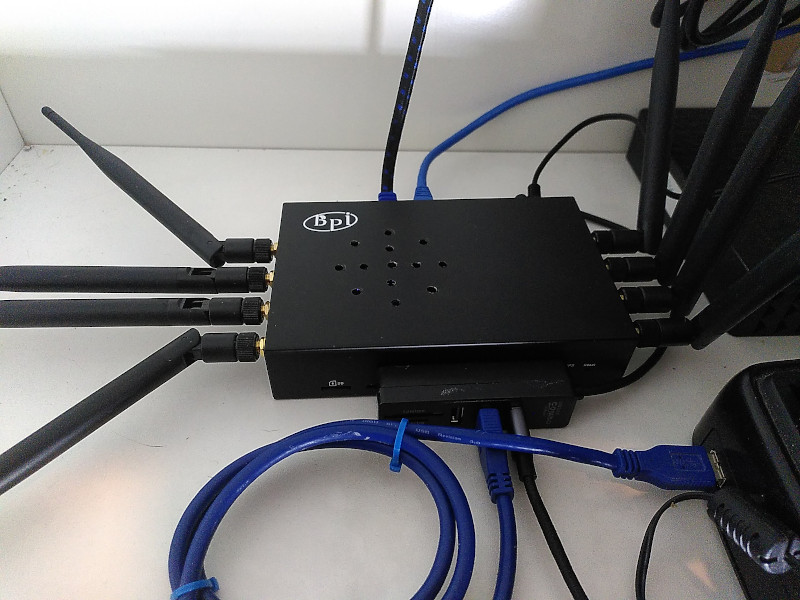
EDIT: I don’t want to open my unit ATM since it’s semi-production now. But here’s what I used, and also the old heatsink I ripped out:
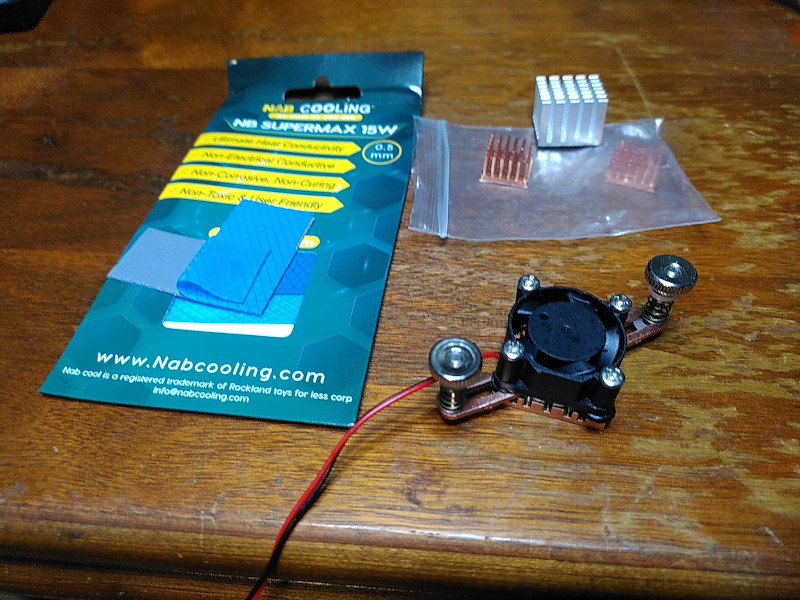
My solution: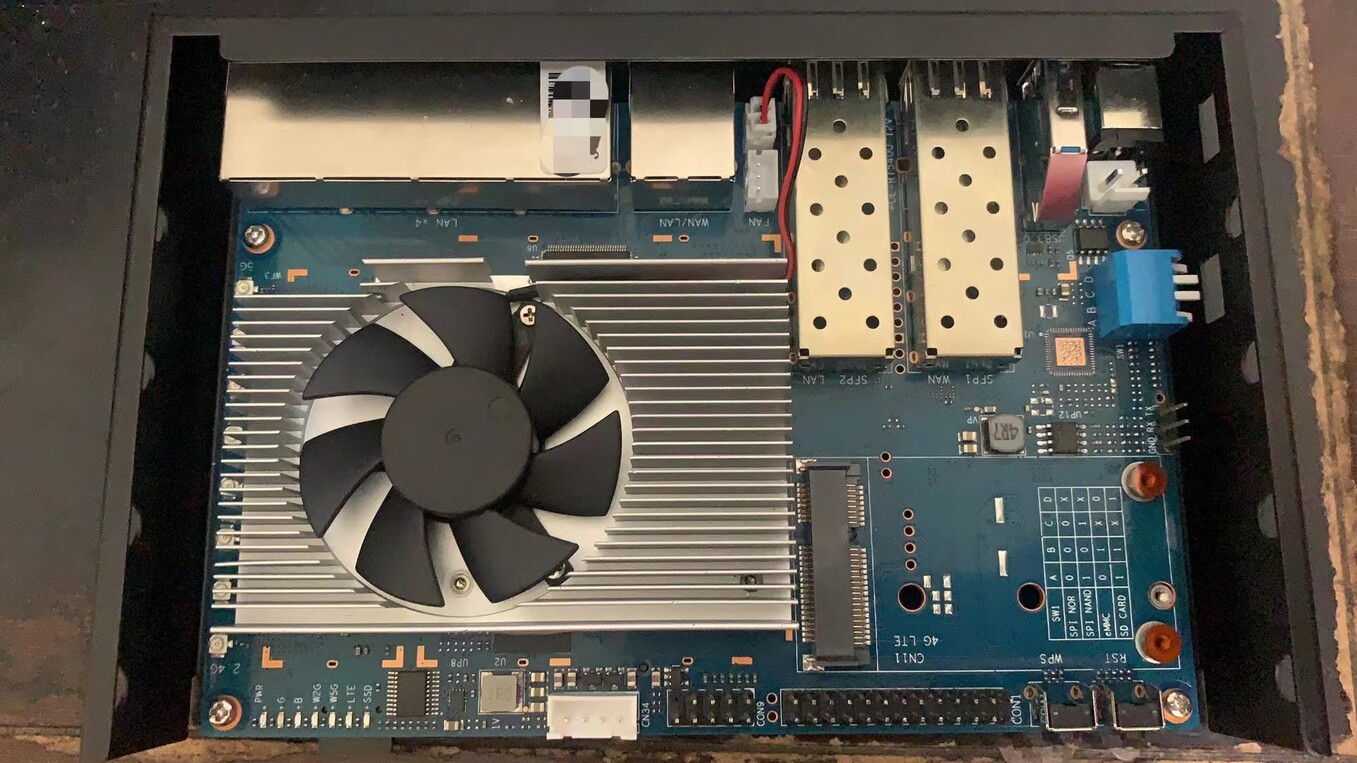
My kit came with pads and a heatsink with fan. Anyone use it? I am debating using the kit version, or a custom version…
That’s basically all I use now. I originally went with a nice fan, but discovered the Filogic 830 on this board produces half the heat of the earlier 7622 of the BPI-R64.
I would, however, suggest proper thermal pads. Almost all adhesive heatsink pads are about as good at thermal conducting as double-sided foam sticky tape. By that I mean they are basically blankets. Finding good adhesive thermal pads can be a pain. The pad I showed a photo of above (NAB NB Supermax 15W) is quite good and reasonably priced. The only drawback is that it’s not quite as adhesive, though that can be a good thing too.